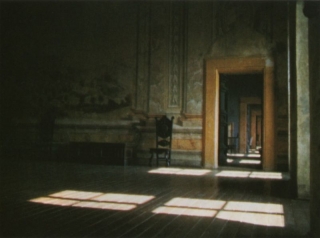Gregory J. Markopoulos: Film as Film
Date: 31 October 2014 | Season: Gregory Markopoulos: Film as Film | Tags: Gregory Markopoulos
GREGORY J. MARKOPOULOS: FILM AS FILM
Friday 31 October 2014, at 6:30pm
London Tate Modern
Gregory J. Markopoulos is a key figure in the history of independent film and was, alongside Kenneth Anger, Stan Brakhage, Maya Deren and Andy Warhol, a pioneer of the New American Cinema of the 1960s. This special evening celebrates the publication of Film as Film: The Collected Writings of Gregory J. Markopoulos, edited by Mark Webber, that gathers together for the first time the writings of this important filmmaker.
Gregory J. Markopoulos, Psyche, USA, 1947, 16mm, 25 min
Gregory J. Markopoulos, Bliss, Greece, 1967, 16mm, 6 min
Gregory J. Markopoulos, Gammelion, Italy, 1968, 16mm, 55 min
The evolution of Markopoulos’ filmmaking – from the early films of the 1940s to his increasingly poetic and metaphysical works made in Europe from the late 1960s onwards – is traced in his writings, which also address the avant-garde cinema, auteurs such as Dreyer, Bresson and Mizoguchi, and the work of his partner Robert Beavers. As Markopoulos pursued his ambitious plan to establish The Temenos, a screening space and archive devoted to his work that would be located in a remote part of Greece, his unique vision of a truly independent cinema was proposed through his texts and has inspired a diverse array of artists. Tacita Dean has celebrated the forthcoming publication stating, “it feels apposite that the writings of Gregory Markopoulos be published now at a time when the very existence of film is so threatened. Nothing more should be needed as a convincing argument that film is still the important, autogenic magical medium for filmmakers today.”
Following screenings of films by Gregory J. Markopoulos at Tate Modern in 2008, this evening will feature works not previously shown at Tate that illustrate key points in Markopoulos’ career interspersed with readings from the book. Made while studying at USC in Los Angeles, Psyche 1947, was his first 16mm film, and demonstrates Markopoulos’ developing style and his sensuous use of colour and composition. Shot in the Hollywood hills, the film was inspired by an unfinished novella by Pierre Louÿs, yet as Markopoulos described “the first thing which I did was to delete the novelette of its lush rhetoric and retain only its symbolic colour. In Psyche, colour plays an important role, similar to the role which colour plays in the paintings of Toulouse Lautrec. Colour reflects the true character of the individual before us, whether it be on the screen, in a painting, or in the street. Colour is Eros.” (Psyche’s Search for the Herb of Invulnerability, 1955).
Bliss 1967, the first film made after Markopoulos moved from the USA to Europe, is a lyrical study of the interior of the Byzantine Church of St. John on the island of Hydra. Using only available light and edited in camera, Bliss demonstrates the filmmaker’s aesthetic economy and rigour. Gammelion 1968, filmed at Il Castello Roccasinibalda in Rieti, Italy, is a major work in Markopoulos’s oeuvre, marking the transition into his late period and anticipating his epic final film, Eniaios 1947-91. Shot with only two rolls of film, the work extends seven minutes of footage to almost one hour of viewing time using hundreds of fades in and out. As lines of poetry, music, or the sound of horses’ hooves are heard on the soundtrack, images appear for only a few frames at a time, creating a remarkable romantic vision of a poetic cinema conjured from its essential components.
Curated by George Clark and Mark Webber. Introduced by Mark Webber and Robert Beavers.
